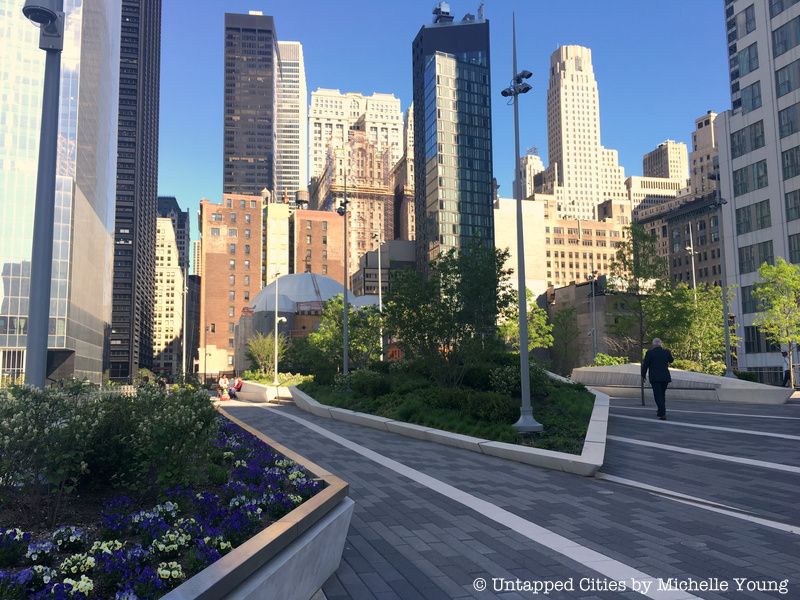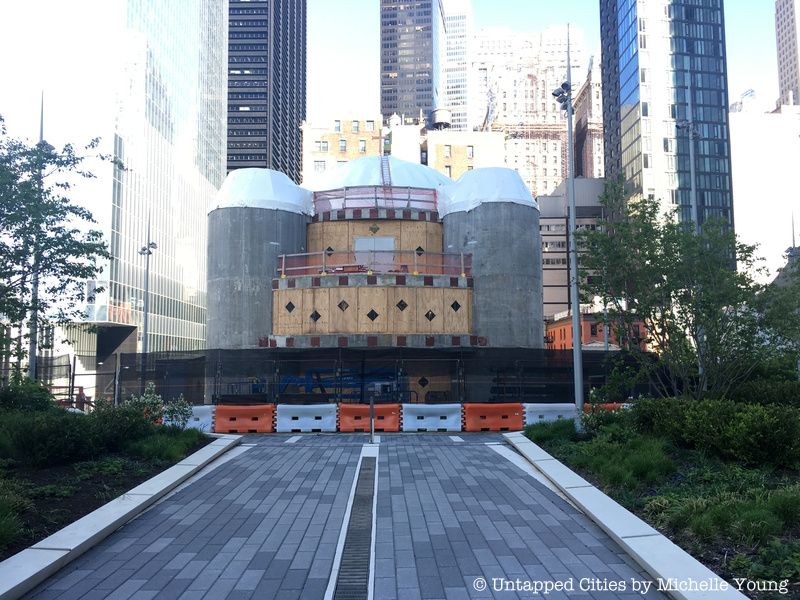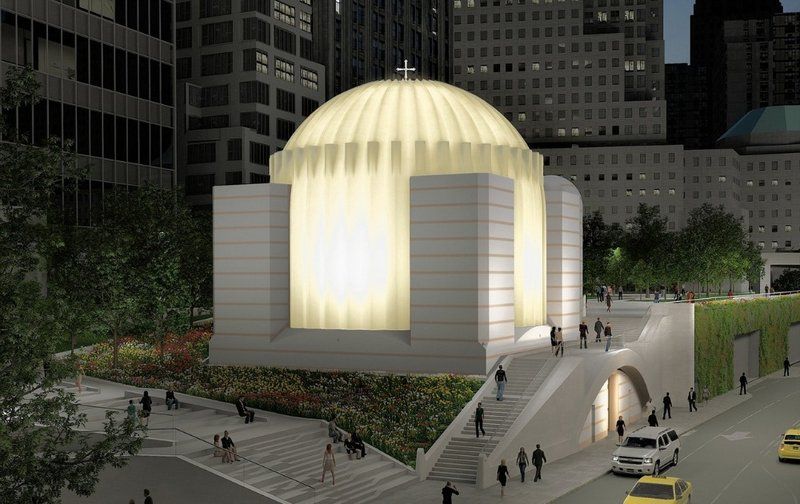See Wildlife and Abandoned Islands on an NYC River Cruise
Sail past a seal hangout and keep your eyes peeled for migrating birds as you sail past historic bridges, abandoned islands, and iconic NYC sites!


Sixteen years have passed since the devastating terrorist attacks of September 11th, 2001, which caused the loss of almost 3,000 lives. The City of New York has since taken initiative – aiming to restore and rebuild what had been destroyed by rebuilding some of the city’s greatest monuments and redeveloping the area. One of the building destroyed that day St. Nicholas Greek Orthodox Church.
A shrine is being built in its honor at a nearby location, and is expected to be complete by the spring of 2018. Here is a look back at the history and secrets of St. Nicholas Church and the latest photographs of the construction of the new shrine.
The collapse of North Tower (1 World Trade Center) and the South Tower (2 World Trade Center) resulted in the collapse of over a dozen nearby structures. St. Nicholas Greek Orthodox Church, located at 155 Cedar Street, was the only house of worship to be destroyed by the attacks. This place of worship, home to a congregation of about seventy families, was crushed following the collapse of the South Tower at 10 am on September 11th and was also the only building that was not part of the World Trade Center complex that was completely destroyed.

155 Cedar Street is now part of Liberty Park, an elevated park which opened last summer. The location change for St. Nicholas Greek Church was not an easy one, as the New York Times reported: “For years, little progress was made as the Greek Orthodox Archdiocese of America and the Port Authority of New York and New Jersey squabbled over how the church would be compensated for giving up the Cedar Street parcel — and the air rights along with it — which the authority needed to build an underground vehicle security center.” The Port Authority claimed the church was exacting “increasingly costly concessions,” while those affiliated with the church stated that the agency was constantly revising demands on the church.
For a period, it was unclear whether the church would be rebuilt at the same site, or at a new parcel offered by the Port Authority at the intersection of Liberty Street and Greenwich Street, but in 2011, this site was finalized.

Atop the construction site of the new shrine, there now stands a 6-foot-3-inch Justinian cross raised above the new development. This temporary cross allowed for the occurrence of a ceremony held by high-ranking church officials. This cross symbolizes the arduous efforts of rebuilding the church, as well as the idea that the St. Nicholas Greek Orthodox Shrine will be completed in the near future. What makes it even more cherished is the fact that it is the first religious symbol by the World Trade Center to appear in public. When the shrine opens in 2018, this temporary cross will be replaced by a permanent one.

Behind every great building there is an inspirational figure. The St. Nicholas Greek Orthodox Church’s great figure was its leader, Father John Romas. He was born on April 10th, 1929 in Dorvitsia, Greece. Father Romas’ father, a flour miller, encouraged him at a young age to tend to the Church of Saint Nicholas. When Father John Romas immigrated to the United States in 1952, he followed this path by being appointed the pastor of St. Nicholas Church in Lower Manhattan. After 9/11, Father Romas dreamed of one day seeing the church rebuilt, but unfortunately died of pancreatic cancer on January 24th, 2016.

The celebration of epiphany is a unique tradition that St. Nicholas Greek Orthodox Church sponsored. Each January, members of the Greek Orthodox Church compete to retrieve a cross from the Hudson River. This act commemorates the baptism of Christ. The person who manages to retrieve the cross is said to receive good luck for the rest of the year, as well as a blessing at the altar.
In the above photograph two teenagers, age 15 adn 17 from New Jersey dive into the cold Hudson River waters in January 1995 to retrieve the cross tossed in by Rev. John Romas of the St. Nicholas Greek Orthodox Church.

Chaos swept the city on that Tuesday in 2001. Thousands lost their lives to the awful terrorist attacks of September 11th. No one was in St. Nicholas Greek Orthodox church that day, so thankfully some lives were spared. Despite the extreme damage done to the church, the area left in shambles, a few important items remained intact.
One of those was the wooden kouvouklion, a bier that represents the tomb of Jesus used on Good Friday services. An icon showing Christ being taken down from the cross was also salvaged. These items were very meaningful to the members of the church, and allowed them to keep something from their fallen place of worship. The St. Nicholas Greek Orthodox Shrine will house a new kouvouklion, in honor of Father Romas.
Unfortunately however, many of other priceless artifacts, which include relics of St. Nicholas, St. Sava and St. Catherine which were donated to the church by the Tsar Nicholas II were lost on 9/11.

Rendering of the new St. Nicholas Orthodox Shrine by Santiago Calatrava
The process of building the shrine has been a long one. One of the first steps was to find an architect with the right vision and talent. Proposals from thirteen architects were received. They were tasked, according to Archbishop Demetrios, with coming up with a design that would be harmonious with its surroundings, a design that is unique and contemporary but remains undoubtedly that of a church.
The selection committee decided unanimously that Santiago Calatrava, who was already building the nearby World Trade Center Transit Hub, was the right man for the project. As Demetrios recounts, Calatrava is said to have been inspired by the Hagia Sophia in Istanbul, a basilica built in the 6th century and later converted into a mosque.

Rendering of the new St. Nicholas Greek Orthodox Shrine at the World Trade Center, designed by Santiago Calatrava
One of the most unique features of the St. Nicholas Greek Orthodox Shrine will be its glowing façade, below a 48.5 foot diamater dome. This structure, estimated to cost $35 million, will glow at night but appear sturdy and solid during the day. The veneer of the thin white Pentelic marble, that will be placed within glass panels, will allow light to shine through. LED lights will be located between the concrete and glass. The marble used to build the shrine happens to be from the same vein in Greece that was extracted for the Parthenon’s construction.
Join us for our upcoming walking tour of the Secrets of 9/11:
Untold Stories of 9/11 Walking Tour
Next, read the Top 10 Secrets of St. Patrick’s Cathedral in NYC and the Top 10 Secrets of NYC’s Riverside Church
Subscribe to our newsletter